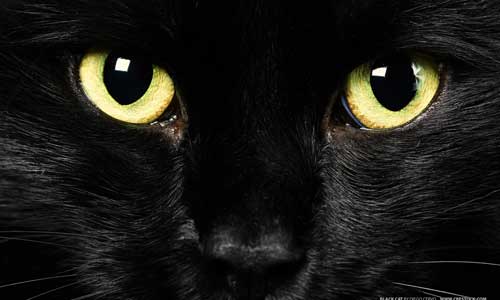Shorter days and longer nights prompt us to turn our focus inward, to reflect and ponder.
“Cat monsters on the sidewalk / Cat witches in the air / Those trick-or-treating cats / Are around everywhere”
Friday, October 31, 2014, is Samhain, aka Halloween, All Hallows Eve, Third Harvest. On the Wheel of Life, this celebration marks the last of the year’s festivals. Mother Earth shall lie fallow, preparing for the coming year and the life it will bring forth. It is a time of transformation, a sort of spiritual hibernation during the “time of no time” that will last until Yule, the Winter Solstice.
We sense the changing seasons. Shorter days and longer nights prompt us to turn our focus inward, to reflect and ponder. In the Long Ago, Samhain was when the harvest was completed and garden tools were cleaned, oiled, and stored away; when no more crops would be harvested; when families hunkered down around the fireplace and listened to grandmother’s tales of the family history. So it is with your Samhain festivities: honor the past and let your remembrances open the door to your future.
This is a fire festival. If you can, build a bonfire; if a bonfire is not possible, have at least a candle burning, as being able to see a flame is important. Prepare your celebratory area by sweeping it with a straw broom or besom. This symbolizes sweeping away the past year and making a path to the future.
Decorate with pumpkins, cauldrons, brooms, depictions of black cats and scarecrows. Use the colors black and orange primarily; red, brown, and golden yellow are also colors appropriate to this season. Dress in costume: in the Long Ago it was thought that spirits of the dead would come to interfere with human life and dressing in costume was thought to confuse these spirits. Now we dress in costume more for fun, but a costume may also be interpreted as yet another way to recognize this season.
The veil between worlds is thinner; messages from those who are passed over are possible.
The veil between worlds is thinner; messages from those who are passed over are possible. You may scry by looking into water in a cauldron or a dark bowl: light a candle to give light, but do not let the candle flame be reflected in the water; gaze into the water but do not focus your eyes on any particular part of the water; observe what images may form, as these images can contain information from those on the other side. If you drop one drop of oil onto the water before scrying, images may be better perceived.
It is customary to honor the dead. You may set a place for your relatives and ancestors on the other side at your table and drink a toast in remembrance. Burying apples near a road is another way to honor those who have passed over, as it provides food for spirits who have no families left to remember them.
Also be sure to honor the crones in your life, past and present. Crones are the grandmothers; the old, wise women; those who carry in their memories the lore of the family or tribe or clan. Croodled* around the hearth, families would listen to the familiar stories, would learn history and values from them. When you revisit these tales of family experiences and adventures, you have another chance to learn valuable life lessons.
*Croodle: an old word meaning to snuggle close to each other, as kittens to their mother.
[Kate Braun was a contributor to the original Rag. Her website is www.tarotbykatebraun.com. She can be reached at kate_braun2000@yahoo.com. Read more of Kate Braun’s writing on The Rag Blog.]



















Its nearly time, are you ready for the Samhain Song? https://www.youtube.com/watch?v=SXa5BMorxT0
This is a common mistake but Samuin (or Samhain) is actually Nov. 1 in our modern calendar and coordinates with the other quarter days of the ancient year: Imbolc, or St Brigit’s Day (Feb 1), Beltine, or May Day (May 1), and Lughnasadh, in com-memoration of the great god, Lugh (Aug. 1). Each of these days, marking the beginning of their respective seasons have their evenings or nights, before the special day, because the Celts believed that, like life itself, each day begins in darkness and proceeds toward light.